Teacher strike is about much more than Minneapolis
When it comes to politics in Minnesota, the Democrats are the professionals, and Republicans are the amateurs. I don’t say that to disparage my Republican friends. Politics is supposed to be about serving, volunteering, making a difference — before you return to real life (where you actually are a professional). I say it to remind everyone that for Democrats and their allies in Minnesota, politics is their real life. They have nothing to go back to. And they play for keeps.
Today’s case in point: the Minneapolis teachers’ strike. Union teachers are professionals, and the current strike isn’t just about Minneapolis schools. Everything about the strike — the timing, the demands, the messaging — is aimed at getting legislators to use the $9.3 billion surplus to add money to the K-12 education budget. If a few thousand kids and families in Minneapolis suffer, that’s just collateral damage in a much larger war.
For proof, look no further than the unified messaging coming out of the DFL enterprise in Minnesota. It starts, of course from their leader and fellow union teacher, Gov. Tim Walz. Almost every day since the strike began, Walz has used his Twitter account and other messaging to call for more money for K-12 schools.

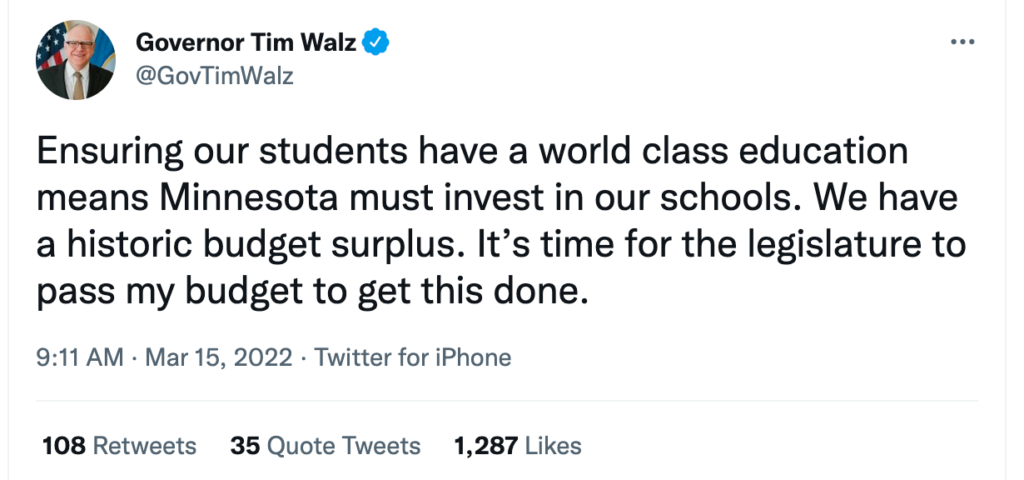
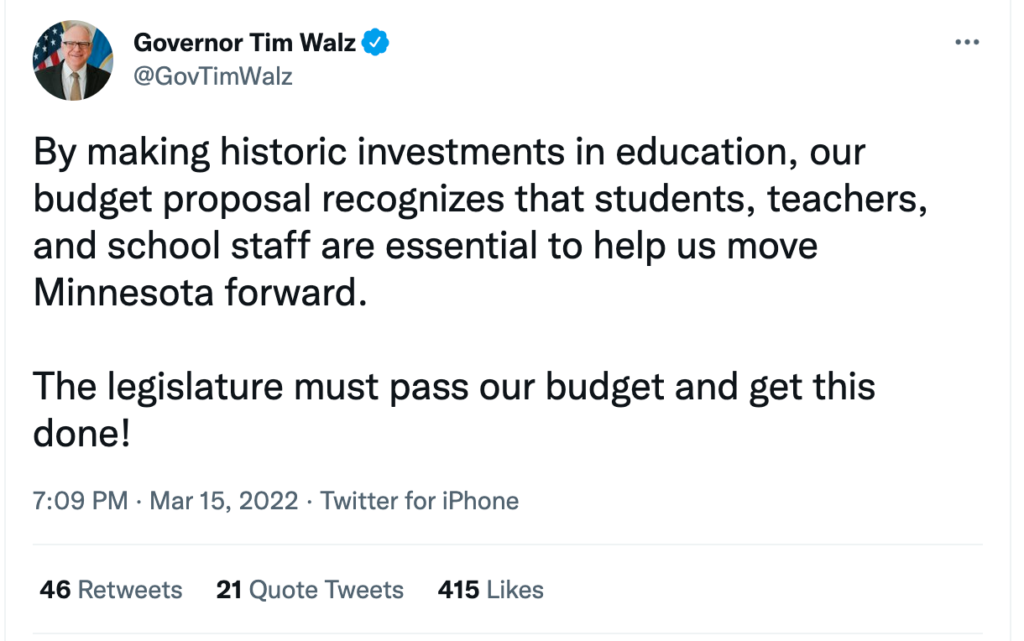
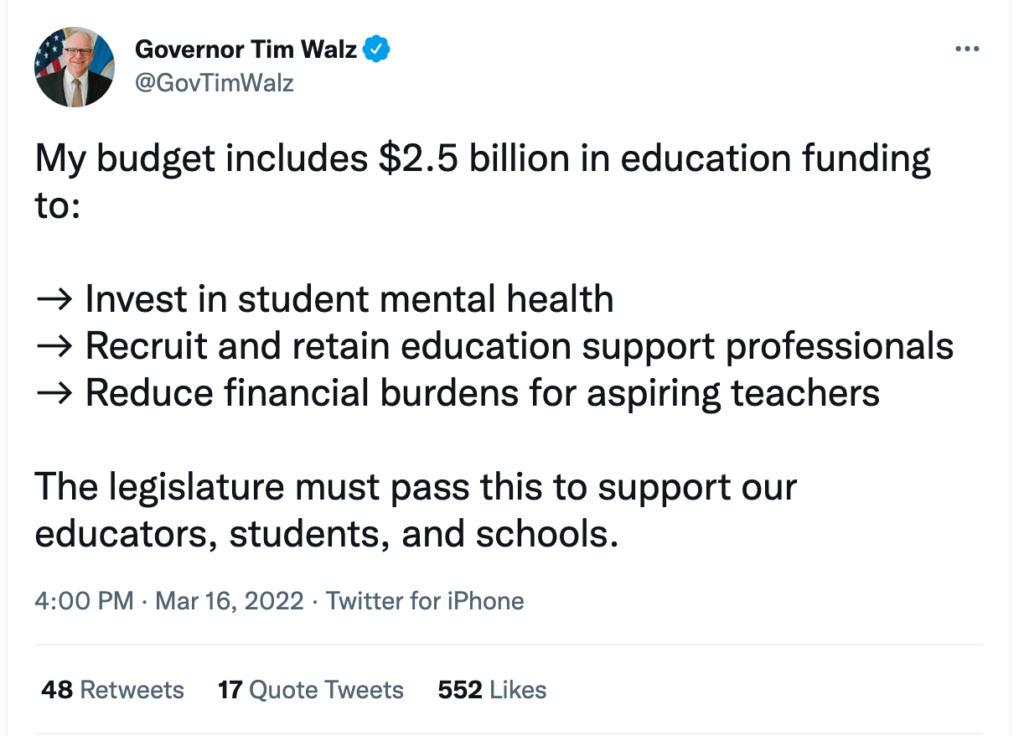
The official Twitter account of the state’s teacher union, Education Minnesota, has been calling for the surplus to be spent on K-12 schools, who they say are “hurting.” It’s hard to understand how schools can be hurting while Gov. Walz is bragging on his campaign website about “the largest increase in per-pupil funding in 15 years.”
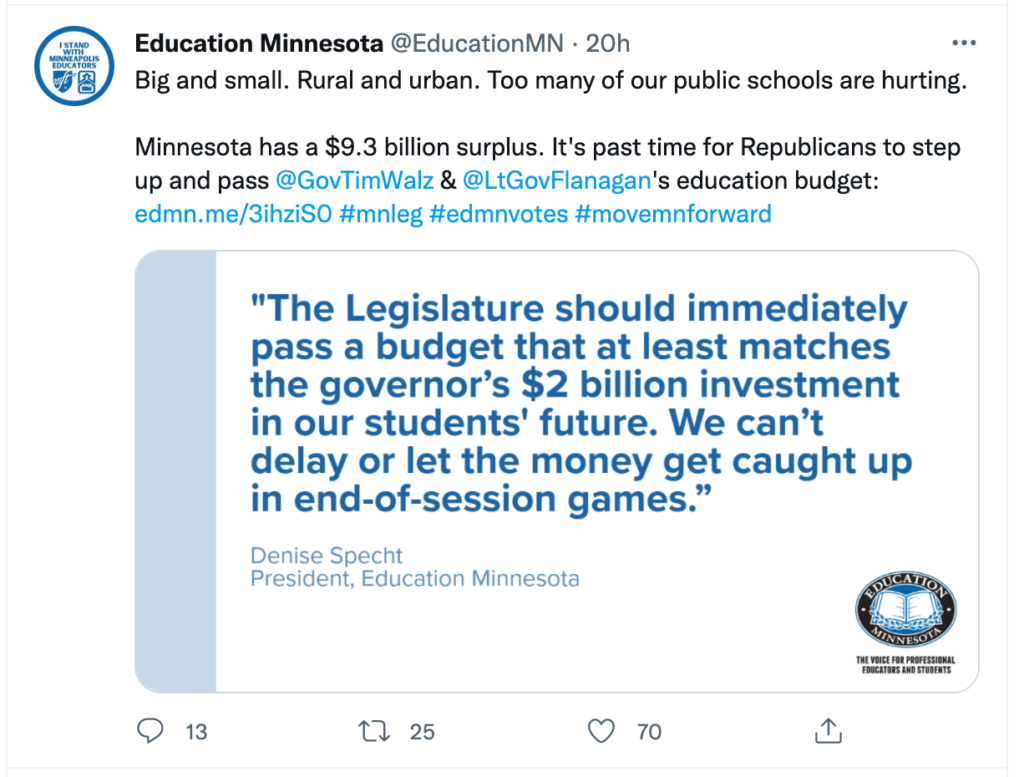
Union leader Denise Specht is also on message, using the strike to build a sense of urgency for the legislature and the surplus.

State Senator Omar Fateh (DFL-Minneapolis) got in on the act in a ridiculous way by blaming former Gov. Tim Pawlenty for the lack of school funding in 2022. FACT CHECK: Pawlenty did not cut the per student formula during his eight years as Governor.
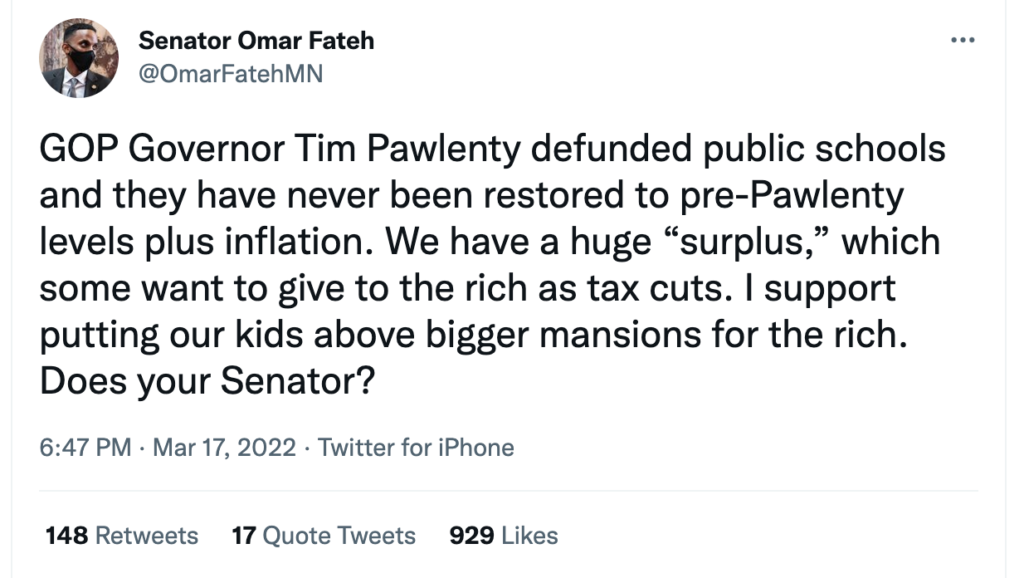
Fateh repeats a tired old talking point about school funding not keeping up with inflation that relies on a bogus inflation index that nobody uses called the implicit price deflator. He challenges followers to pressure their State Senators into using the surplus for schools and not “bigger mansions for the rich.” Is he talking about the big mansions his campaign contributors allegedly bought with school lunch money?
Even Minneapolis Superintendent Ed Graff is on message. He recently told the press the state could intervene by sending more money to Minneapolis, even though his revenue problems are mostly the result of declining enrollment, with 42% of the students in the district already choosing private schools, charter schools, open enrollment or homeschooling.
From The 19th, an independent online news source:
“We do have shared values — that’s very apparent to me, board members and the public. Unfortunately, the reality is we’re resource-limited,” Graff said. “The finances we have are not enough to provide the support we need to provide.”
Graff also implied that the state could intervene, stressing that the school district cannot afford to make the changes educators seek without outside help. On the same day as his news conference, about 2,000 Minneapolis educators and their allies demonstrated at the state capitol to call on the state to use its $9.25 billion surplus to support public schools.
Both sides of the strike, the Governor, State Senators — everyone can see that the only real solution in Minneapolis is to give them (and every other school district) more money. More money to “keep up with inflation” (we have). More money to lower class sizes (which won’t improve test scores). More money for school districts around the state to settle contracts with their union employees for more than they can afford. Which brings the focus right back to the legislature.
Always remember, they’re the professionals.